It is a shortened trading week with the Labor Day holiday. But the big event this week is the ECB meeting on Thursday.
The ECB chief economist already noted last week that the euro rate absolutely mattered, and if it does matter, then the ECB may look to try to weaken it.
A weaker euro is bullish for the dollar and bearish for risk assets and anything linked to inflation. Now, the ECB may not choose to take aggressive action at this meeting, but it is the language or jawboning, they choose to use that will matter most, putting the market on notice.
This may be a crucial meeting, in that context, for the ECB to get out ahead of the Fed and try to turn the tied in what could become a race to devalue currencies. The dollar has been hanging around the 92 to 92.50 level, but has been showing signs of turning with an dollar index that is diverging higher. It will take a move above 93.50 to get the dollar into rally mode.
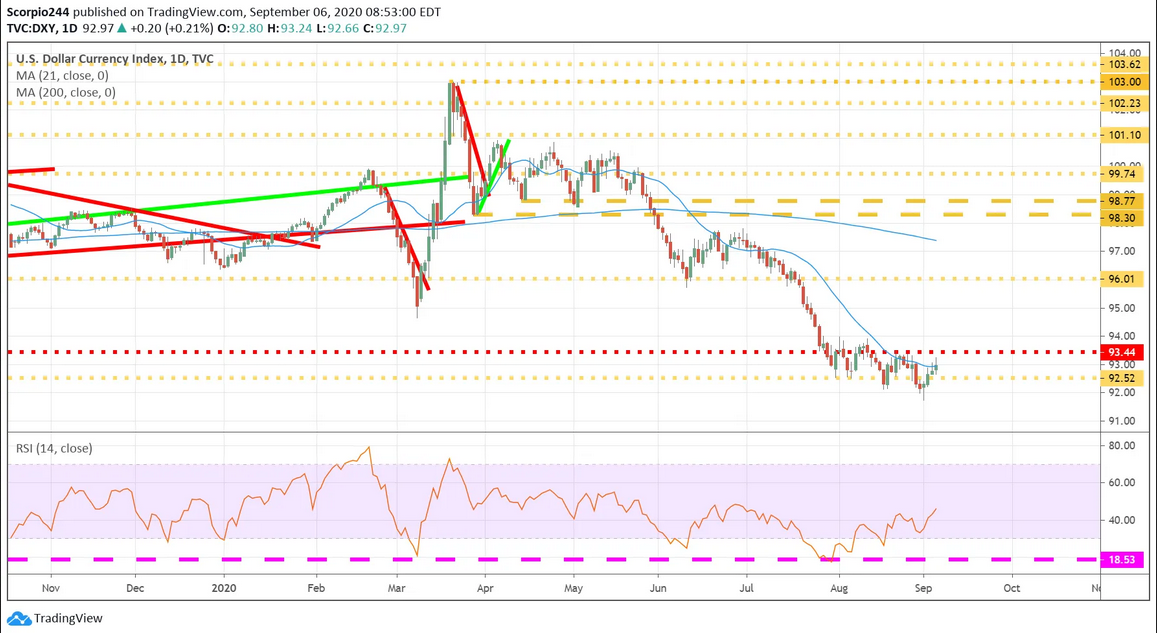
Meanwhile, the market may already be getting ahead of the curve because you can see the rates to borrow overseas dollars are on the rise, with the eurodollar futures appearing to have broken out potentially.

The euro has been challenging the 1.20 level vs. the dollar, but to this point, it has been unable to break out. But a reversal may be on the way, with an RSI that is dropping and diverging from the rising euro. A break below 1.17 in the euro gets it moving lower back to the trend line, and potentially to 1.14.
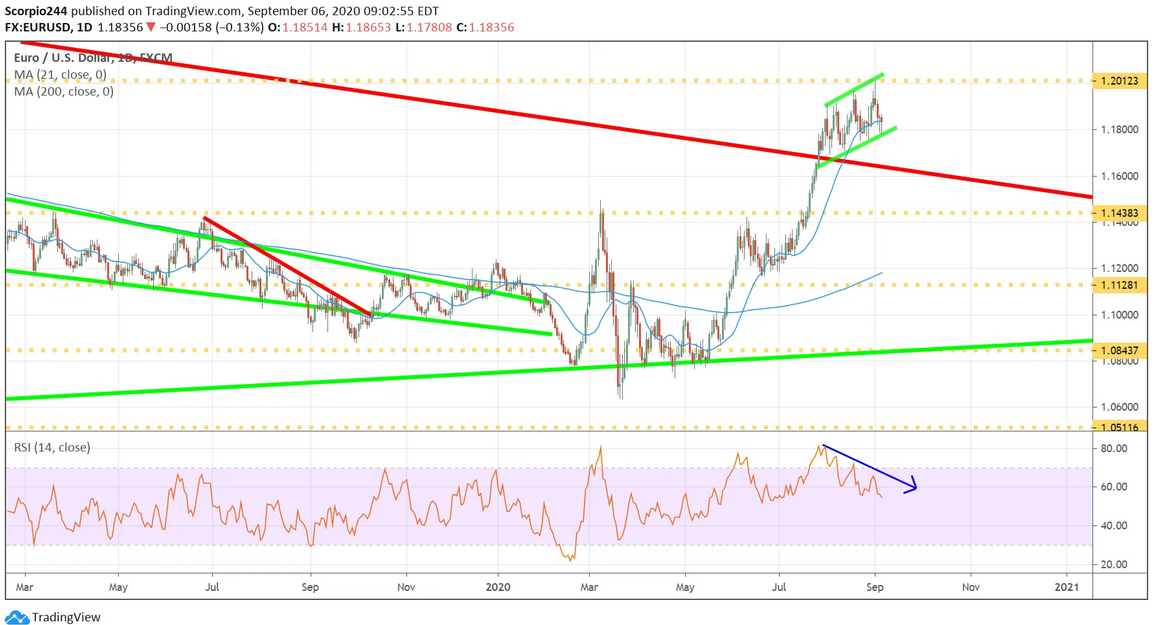
Not only that, but non-commercial holds on long euro futures have risen to their highest levels ever. It means an unwind would be swift and sudden.
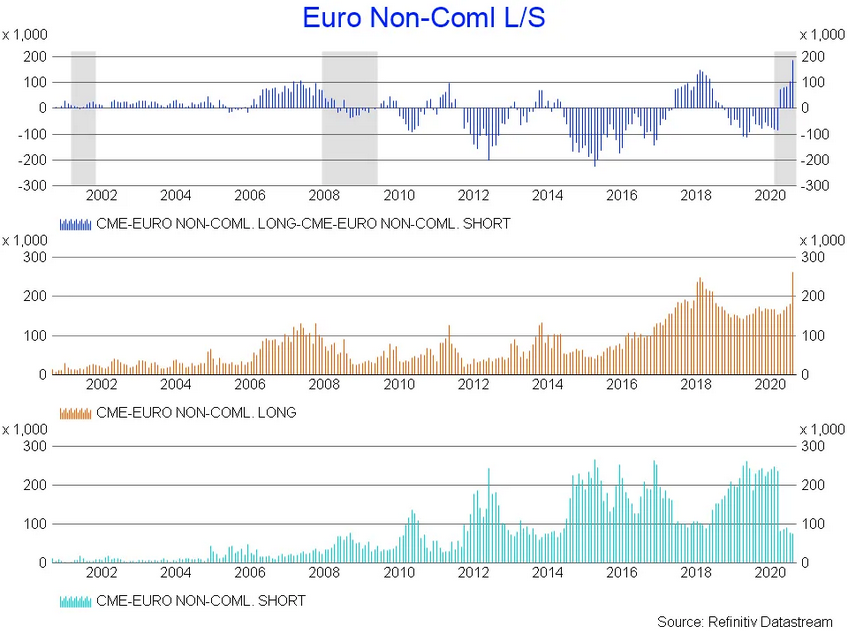
Now a more strong dollar should be positive for European equities, as a weaker euro will make the export economies like Germany more competitive, while also helping to boost inflation and growth for the region. But, at the same time, this a negative for US dollar quoted ADRs.
If the ECB takes on a more aggressive monetary stance, it is likely to widen the spread between US and European interest rates. The spread between the US and Germany 10-year bonds are ready to surge and break out. If that should happen, we could see the spread rise to around 1.42% from 1.20%, further strengthening the dollar vs. the euro.
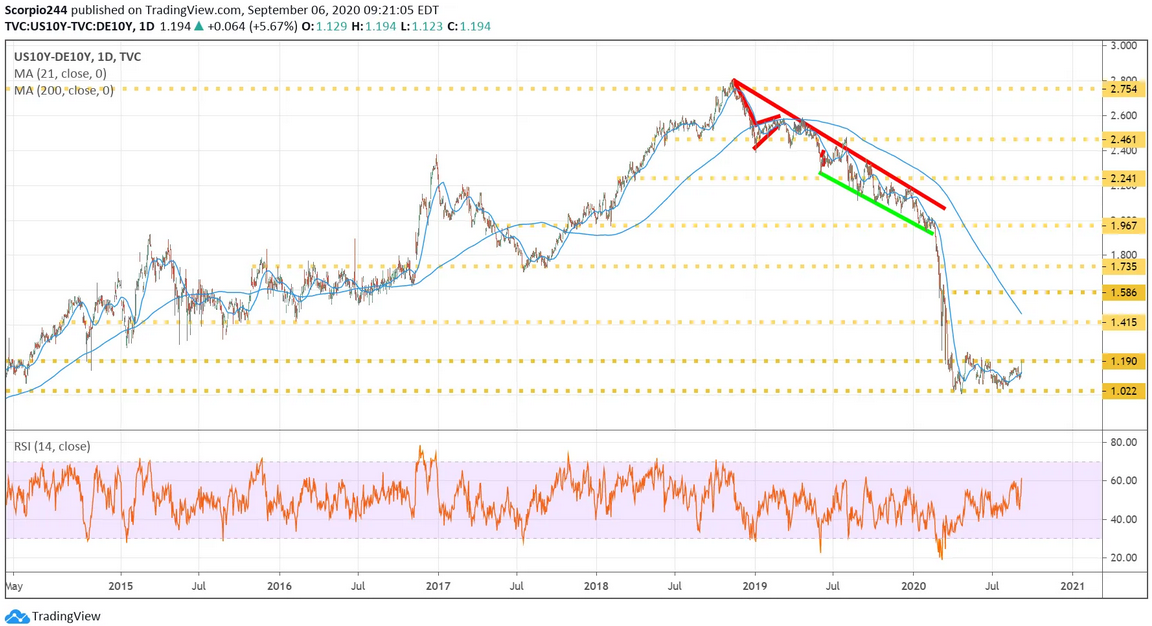
That will result in Gold prices likely dropping significantly from their current levels. For now, gold has been able to hold steady around $1,925, and it feels as if there is a giant buyer there. But once that buyer gets cleaned up, the run for gold could be over, aided by a stronger dollar. It could result in the gold falling back to $1790.
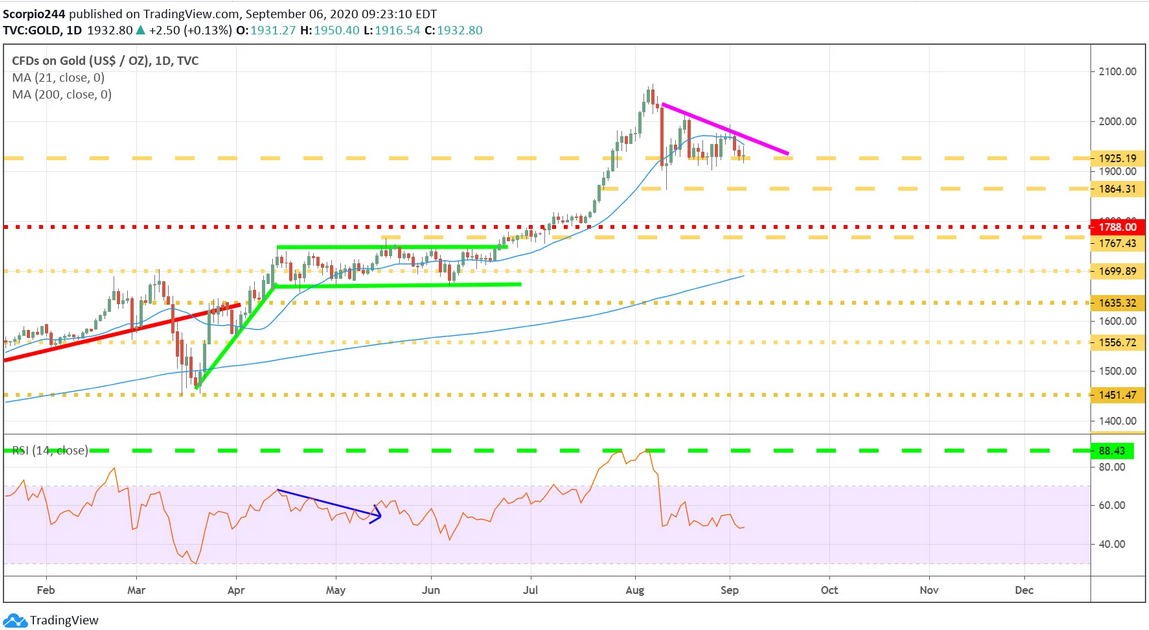
Meanwhile, Oil looks like it could ready to move back to $34.
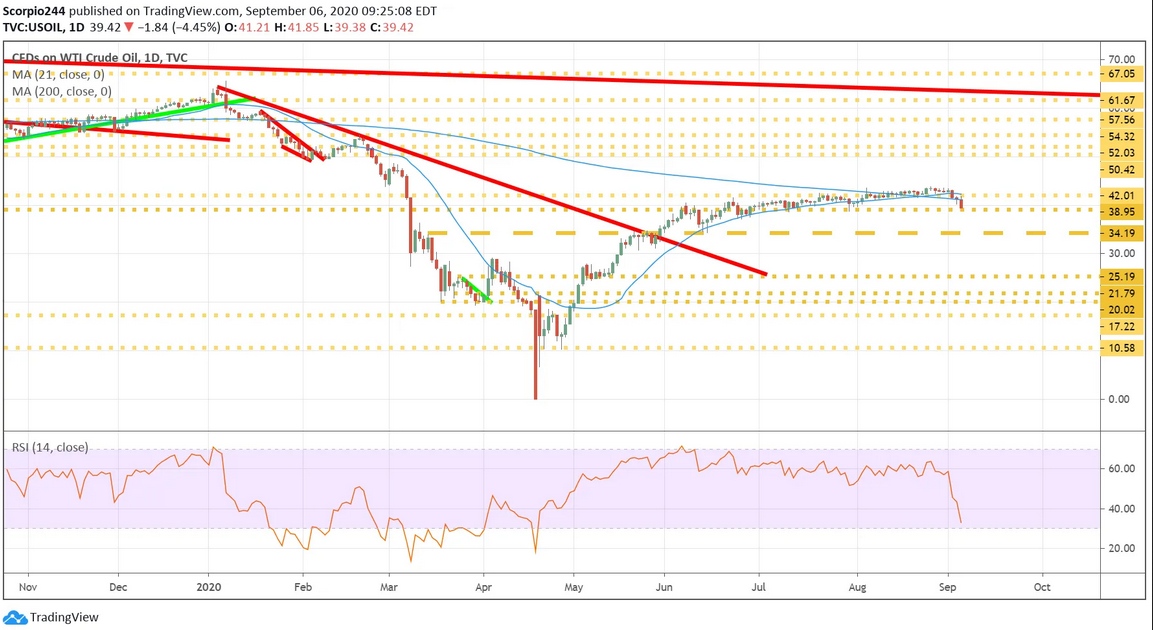
Finally, a stronger dollar hurts US equities because it makes multi-nationals less competitive and hurts the revenue and earnings; when converting back into US dollars for reporting purposes, it acts as a drag on earnings.
The worst thing that can happen is a sudden and aggressive move higher in the dollar index over the coming weeks. What happens this week with the ECB will matter a great deal.
